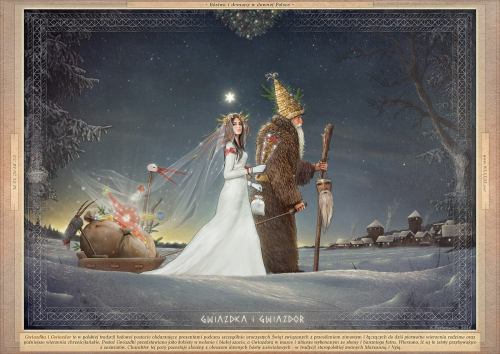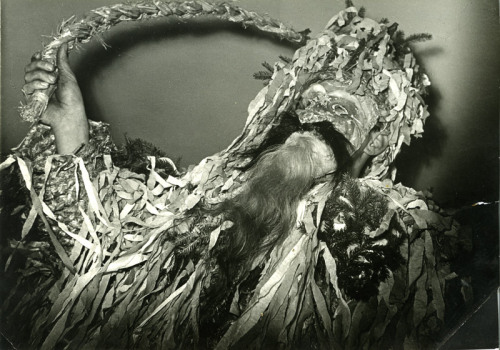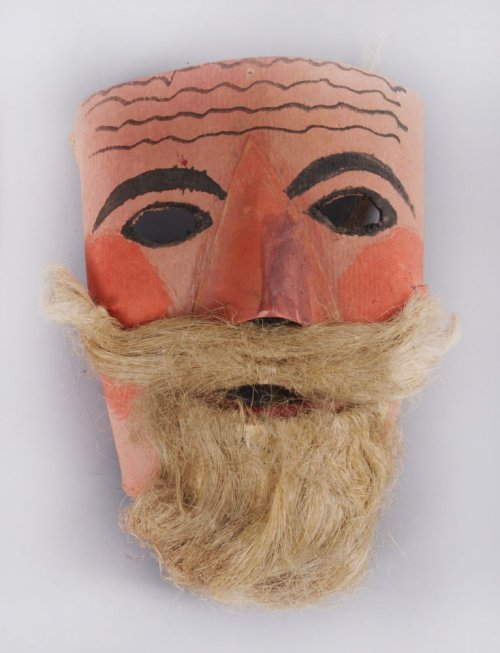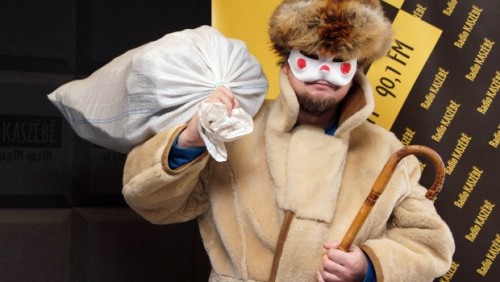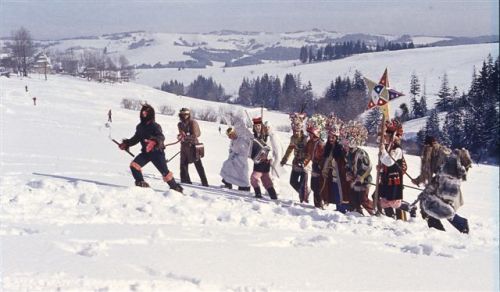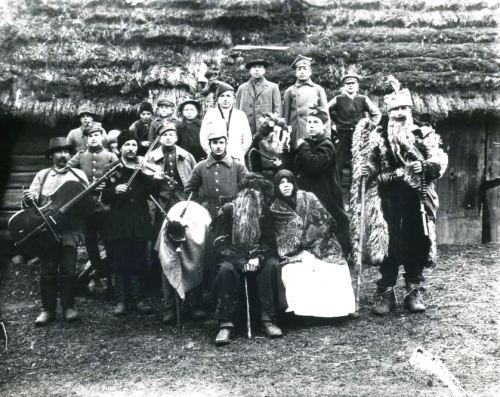lamus-dworski:Gwiazdor (or Gwiżdż) is a character asking about good and bad deeds and bringing gifts
lamus-dworski:Gwiazdor (or Gwiżdż) is a character asking about good and bad deeds and bringing gifts during and after Christmas (originally after winter solstice) in the Polish folklore. He appears mainly in the regions of Kashubia (where his name is spelled Gwiôzdór), some parts of Warmia, provinces of Greater Poland, Kuyavia-Pomerania and Lubuskie.Gwiazdor wears a mask with a beard, a long coat made of either hairy fur or woven straw, sometimes appears wearing a high ‘crown’ of woven straw, and his accessories are bells and various types of rods. He often carries a bag with small gifts for the children, in which he also keeps small birch-rods (rózgi) as a ‘gift’ for those who weren’t dutiful during the year. His name is derived from the word ‘gwiazda’ meaning a star, and can be translated rougly as a Star-Man or Man of the Stars.He is a unique character based on a certain archetype of an old all-knowing man arriving from the outerworld, possibly based on old-Slavic winter deities, but in the modern Poland his name is often mistakenly used as a synonym for the Santa Claus. In other regions of Poland the same type of character was appearing under the different names, for example Wigiliorze / Wiliarze, Starcaki, Józefy (often in plural forms).Gwiazdor was often accompanied by a Gwiazdka (literally a ‘Little Star’) - mysterious woman dressed in a long white dress, often covering her face and wearing a flower wreath. Her costume included elements made of straw, flowers, and many colorful ribbons or a veil. Over the course of time she was gradually replaced by a typical figure of an angel (still called a ‘Gwiazdka’ in most of the cases). In the modern days she often appears also as a figure of a veiled ‘bride’.They’re closely connected to the custom of kolędowanie (known in English as koliada / koleda or ‘Slavic caroling’), winter ritual of pre-Christian roots later incorporated into the celebrations of Christmas, New Year’s and carnival season (zapusty). They arrive with a larger group of people dressed in various symbolic costumes who stroll from house to house to sing traditional carols in exchange for sweets, drinks or small money, and have fun or pull harmless pranks with the householders. The groups of kolędnicy (carolers) can be spotted from the evening of the Christmas Eve up until the day before Ash Wednesday (which usually falls in the beginning of February). Important in that context is the traditional custom of waiting for the ‘First Star’ to appear on the sky before dining on the Christmas Eve in Poland.Sources of pictures: Weneda - Mitologia Staropolska, Wiano.eu, Radio Kaszebe, Muzeum Narodowe w Gdańsku, ethnomuesum.pl, Izba Skarbów. -- source link
Tumblr Blog : lamus-dworski.tumblr.com
#poland#polska#polish tradition#christmas#s#u
